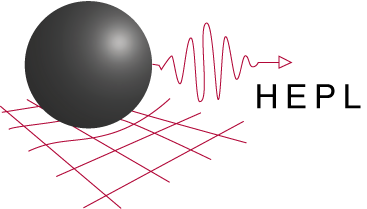News & Events
HEPL Seminar
Matteo Benedetti
Assistant Professor of Machine Design
University of Trento
Releasing the LISA Pathfinder test mass into geodesic:
a challenge between physics and engineering
ABSTRACT: The Laser Interferometer Space Antenna (LISA) is a space mission, which will reveal gravitational waves. Some of its key technologies will be tested by means of the LISA Pathfinder mission, in order to reduce the risk correlated with LISA challenging requirements. Among its more critical subsystems, the Gravitational Reference Sensor (GRS) has been designed to host a 2kg Au-Pt cubic Test Mass (TM) in free-fall, with the tightest requirement ever set on the purity of a geodesic trajectory. The GRS shows a specific criticality related to the need to constrain the TM during the spacecraft launch and subsequently inject it in the geodesic, breaking the adhesion arisen at the contact surfaces with its mechanical constraints. The injection strategy is dynamic: by means of a quick retraction of the release-dedicated holding tips the TM is detached from the constraint, relying on its inertia. The experiment realized through the Transferred Momentum Measurement Facility reproduces the injection of the LISA TM into geodesic, aiming at quantifying the residual velocity of the mass after separation from the release tip. In the field of dynamic behavior of materials, the TM injection constitutes a novel area of research, where the strength of metallic adhesion is explored under high separation-rate conditions.
BIO: Assistant Professor of Machine Design since 2007, Matteo Benedetti took his PhD in Materials Engineering in 2004 at the University of Trento. He was a visiting researcher at the Technical University Munich and at the Technical University Hamburg-Harburg (Germany). His research interests include a) characterization and modeling of the mechanical behavior of materials subjected to static and cyclic loads, b) study of the propagation conditions of fatigue cracks, even emanating form notches under complex loading conditions, in metallic materials with particular attention to titanium alloys, c) experimental measure and numerical modeling of residual stress fields, d) experimental investigation and theoretical modeling of adhesive contact problems for spatial applications.
Location: Physics/Astrophysics Building, Conference Rooms 102 & 103
Monday, June 11, 2012, 4:15 to 5:30pm
Light refreshments will be available at 4pm; Presentation begins 4:15am. Open to All
Join our HEPL Seminar Mailing list!
Send an email to majordomo@lists.stanford.edu and type
subscribe heplseminars user@stanford.edu
in the body of the message where user@stanford.edu is your email address
You will receive an email confirmation. We hope to see you at a HEPL Seminar soon.


